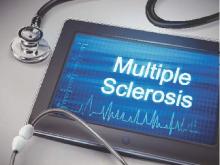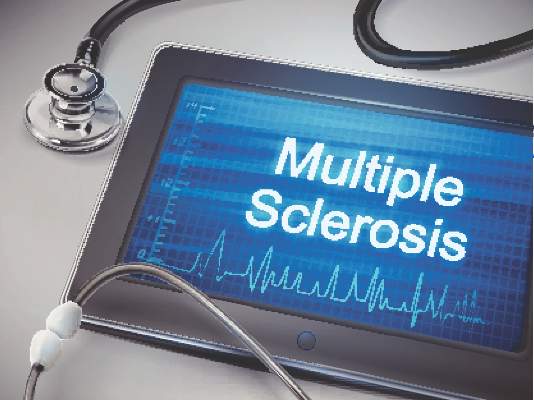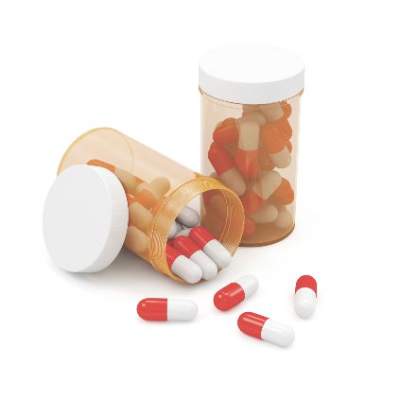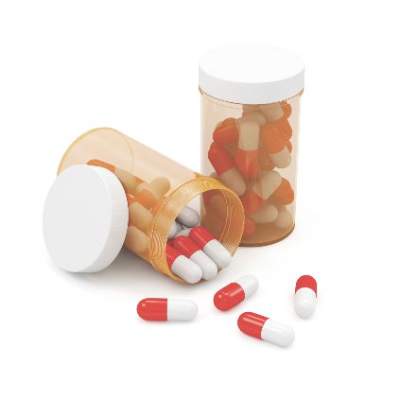User login
Second malignancy risk higher in patients with fusion-negative sarcoma
Survivors of fusion-negative sarcomas have a higher risk of developing second malignant neoplasms, report Philip J. Lupo, PhD, and his coauthors from the Baylor College of Medicine in Houston.
Investigators evaluated 4,822 survivors of fusion-positive (F+) sarcomas and 3,963 survivors of fusion-negative (F–) sarcomas aged birth-39 years. Patients were diagnosed between 1992 and 2012, and were included in the Surveillance, Epidemiology, and End Results (SEER) database.
Results showed that second malignancy risk was almost two times higher in F+ sarcoma patients, compared with the reference population (standardized incidence ratio = 1.86; 95% confidence interval, 1.48-2.30), and almost three times higher in survivors of F– sarcomas (SIR = 2.89; 95% CI, 2.30-3.59).
Second malignancy types were similar between F+ and F– survivors. However, the second malignant neoplasm rate was greater among survivors of F– sarcomas (adjusted hazard ratio = 1.38; 95% CI, 1.01-1.89) when compared with survivors of F+ sarcomas, Dr. Lupo and his colleagues reported.
Read the full study in Cancer.
Survivors of fusion-negative sarcomas have a higher risk of developing second malignant neoplasms, report Philip J. Lupo, PhD, and his coauthors from the Baylor College of Medicine in Houston.
Investigators evaluated 4,822 survivors of fusion-positive (F+) sarcomas and 3,963 survivors of fusion-negative (F–) sarcomas aged birth-39 years. Patients were diagnosed between 1992 and 2012, and were included in the Surveillance, Epidemiology, and End Results (SEER) database.
Results showed that second malignancy risk was almost two times higher in F+ sarcoma patients, compared with the reference population (standardized incidence ratio = 1.86; 95% confidence interval, 1.48-2.30), and almost three times higher in survivors of F– sarcomas (SIR = 2.89; 95% CI, 2.30-3.59).
Second malignancy types were similar between F+ and F– survivors. However, the second malignant neoplasm rate was greater among survivors of F– sarcomas (adjusted hazard ratio = 1.38; 95% CI, 1.01-1.89) when compared with survivors of F+ sarcomas, Dr. Lupo and his colleagues reported.
Read the full study in Cancer.
Survivors of fusion-negative sarcomas have a higher risk of developing second malignant neoplasms, report Philip J. Lupo, PhD, and his coauthors from the Baylor College of Medicine in Houston.
Investigators evaluated 4,822 survivors of fusion-positive (F+) sarcomas and 3,963 survivors of fusion-negative (F–) sarcomas aged birth-39 years. Patients were diagnosed between 1992 and 2012, and were included in the Surveillance, Epidemiology, and End Results (SEER) database.
Results showed that second malignancy risk was almost two times higher in F+ sarcoma patients, compared with the reference population (standardized incidence ratio = 1.86; 95% confidence interval, 1.48-2.30), and almost three times higher in survivors of F– sarcomas (SIR = 2.89; 95% CI, 2.30-3.59).
Second malignancy types were similar between F+ and F– survivors. However, the second malignant neoplasm rate was greater among survivors of F– sarcomas (adjusted hazard ratio = 1.38; 95% CI, 1.01-1.89) when compared with survivors of F+ sarcomas, Dr. Lupo and his colleagues reported.
Read the full study in Cancer.
FROM CANCER
Study identifies changing trends in PBC incidence, mortality
A new study has identified a higher mortality rate among males with primary biliary cholangitis (PBC) and a lower sex ratio in disease prevalence than previously thought, according to findings published online in the journal Scientific Reports.
Investigators analyzed inpatient data from 2000 to 2009 for PBC patients in Denmark and in the Italian province of Lombardia. In the Lombardia cohort, 2,970 PBC patients were identified, with a female to male ratio of 2.3:1. In the Denmark population, 722 cases were identified, with a female to male ratio of 4.2:1, reported Dr. Ana Lleo from the Humanitas Clinical and Research Center in Rozzano, Italy, and her coauthors.
Among the Lombardia patients, survival at 1, 5, and 10 years was significantly higher for females (89%, 95% confidence interval, 88%-91%; 77%, 95% CI, 75%-78%; and 67%, 95% CI, 65%-70%, respectively) than for males (78%, 95% CI, 75%-80%; 55%, 95% CI, 52%-59%; and 47%, 95% CI, 43%-51%, respectively). Findings were similar in the Denmark cohort, with female patients having higher survival rates (survival at 1, 5, and 10 years of 90%, 87%-92%; 73%, 95% CI, 69%-77%; and 60%, 95% CI, 53%-67%, respectively) than males (72%, 95% CI, 63%-79%; 42%, 95% CI, 32%-51%; and 27%, 95% CI, 14%-43%, respectively), the authors reported.
The study findings question long-held beliefs on PBC, the authors said. Hepatologists should be aware that “male PBC patients have higher mortality than [do] their female counterparts, such that close clinical follow-up and checking adherence to therapy are strongly recommended,” Dr. Lleu and colleagues concluded.
Read the full article in Scientific Reports: http://www.ncbi.nlm.nih.gov/pmc/articles/PMC4872151.
A new study has identified a higher mortality rate among males with primary biliary cholangitis (PBC) and a lower sex ratio in disease prevalence than previously thought, according to findings published online in the journal Scientific Reports.
Investigators analyzed inpatient data from 2000 to 2009 for PBC patients in Denmark and in the Italian province of Lombardia. In the Lombardia cohort, 2,970 PBC patients were identified, with a female to male ratio of 2.3:1. In the Denmark population, 722 cases were identified, with a female to male ratio of 4.2:1, reported Dr. Ana Lleo from the Humanitas Clinical and Research Center in Rozzano, Italy, and her coauthors.
Among the Lombardia patients, survival at 1, 5, and 10 years was significantly higher for females (89%, 95% confidence interval, 88%-91%; 77%, 95% CI, 75%-78%; and 67%, 95% CI, 65%-70%, respectively) than for males (78%, 95% CI, 75%-80%; 55%, 95% CI, 52%-59%; and 47%, 95% CI, 43%-51%, respectively). Findings were similar in the Denmark cohort, with female patients having higher survival rates (survival at 1, 5, and 10 years of 90%, 87%-92%; 73%, 95% CI, 69%-77%; and 60%, 95% CI, 53%-67%, respectively) than males (72%, 95% CI, 63%-79%; 42%, 95% CI, 32%-51%; and 27%, 95% CI, 14%-43%, respectively), the authors reported.
The study findings question long-held beliefs on PBC, the authors said. Hepatologists should be aware that “male PBC patients have higher mortality than [do] their female counterparts, such that close clinical follow-up and checking adherence to therapy are strongly recommended,” Dr. Lleu and colleagues concluded.
Read the full article in Scientific Reports: http://www.ncbi.nlm.nih.gov/pmc/articles/PMC4872151.
A new study has identified a higher mortality rate among males with primary biliary cholangitis (PBC) and a lower sex ratio in disease prevalence than previously thought, according to findings published online in the journal Scientific Reports.
Investigators analyzed inpatient data from 2000 to 2009 for PBC patients in Denmark and in the Italian province of Lombardia. In the Lombardia cohort, 2,970 PBC patients were identified, with a female to male ratio of 2.3:1. In the Denmark population, 722 cases were identified, with a female to male ratio of 4.2:1, reported Dr. Ana Lleo from the Humanitas Clinical and Research Center in Rozzano, Italy, and her coauthors.
Among the Lombardia patients, survival at 1, 5, and 10 years was significantly higher for females (89%, 95% confidence interval, 88%-91%; 77%, 95% CI, 75%-78%; and 67%, 95% CI, 65%-70%, respectively) than for males (78%, 95% CI, 75%-80%; 55%, 95% CI, 52%-59%; and 47%, 95% CI, 43%-51%, respectively). Findings were similar in the Denmark cohort, with female patients having higher survival rates (survival at 1, 5, and 10 years of 90%, 87%-92%; 73%, 95% CI, 69%-77%; and 60%, 95% CI, 53%-67%, respectively) than males (72%, 95% CI, 63%-79%; 42%, 95% CI, 32%-51%; and 27%, 95% CI, 14%-43%, respectively), the authors reported.
The study findings question long-held beliefs on PBC, the authors said. Hepatologists should be aware that “male PBC patients have higher mortality than [do] their female counterparts, such that close clinical follow-up and checking adherence to therapy are strongly recommended,” Dr. Lleu and colleagues concluded.
Read the full article in Scientific Reports: http://www.ncbi.nlm.nih.gov/pmc/articles/PMC4872151.
FROM SCIENTIFIC REPORTS
Midlife interventions help preserve later cognitive function
Midlife interventions including physical activity, hypertension control, and maintaining healthy HDL cholesterol may ward off later cognitive decline, reported Cassandra Szoeke, Ph.D., of the Centre for Medical Research at the University of Melbourne, and her colleagues.
In a study of 387 patients from the Women’s Healthy Ageing Project, investigators collected neuropsychiatric assessments, clinical data, and biomarkers at baseline, with at least three follow-up visits and one cognitive reassessment over 20 years. Dr. Szoeke and her colleagues used mixed linear models to analyze the significance of risk factors on verbal memory. The mean age of participants was 49.6 years.
Results showed that cumulative mid- to late-life physical activity had the strongest effect on better verbal memory later in life, the authors said in the report. The next most likely contributors were the negative effect of cumulative hypertension and the beneficial effect of HDL cholesterol.
The findings indicate that “physical activity, hypertension control, and achieving optimal levels of HDL cholesterol will help maintain later-life verbal memory skills,” Dr. Szoeke and her colleagues wrote.
Read the full report in the American Journal of Geriatric Psychiatry: http://www.ajgponline.org/article/S1064-7481%2816%2930113-0/fulltext
Midlife interventions including physical activity, hypertension control, and maintaining healthy HDL cholesterol may ward off later cognitive decline, reported Cassandra Szoeke, Ph.D., of the Centre for Medical Research at the University of Melbourne, and her colleagues.
In a study of 387 patients from the Women’s Healthy Ageing Project, investigators collected neuropsychiatric assessments, clinical data, and biomarkers at baseline, with at least three follow-up visits and one cognitive reassessment over 20 years. Dr. Szoeke and her colleagues used mixed linear models to analyze the significance of risk factors on verbal memory. The mean age of participants was 49.6 years.
Results showed that cumulative mid- to late-life physical activity had the strongest effect on better verbal memory later in life, the authors said in the report. The next most likely contributors were the negative effect of cumulative hypertension and the beneficial effect of HDL cholesterol.
The findings indicate that “physical activity, hypertension control, and achieving optimal levels of HDL cholesterol will help maintain later-life verbal memory skills,” Dr. Szoeke and her colleagues wrote.
Read the full report in the American Journal of Geriatric Psychiatry: http://www.ajgponline.org/article/S1064-7481%2816%2930113-0/fulltext
Midlife interventions including physical activity, hypertension control, and maintaining healthy HDL cholesterol may ward off later cognitive decline, reported Cassandra Szoeke, Ph.D., of the Centre for Medical Research at the University of Melbourne, and her colleagues.
In a study of 387 patients from the Women’s Healthy Ageing Project, investigators collected neuropsychiatric assessments, clinical data, and biomarkers at baseline, with at least three follow-up visits and one cognitive reassessment over 20 years. Dr. Szoeke and her colleagues used mixed linear models to analyze the significance of risk factors on verbal memory. The mean age of participants was 49.6 years.
Results showed that cumulative mid- to late-life physical activity had the strongest effect on better verbal memory later in life, the authors said in the report. The next most likely contributors were the negative effect of cumulative hypertension and the beneficial effect of HDL cholesterol.
The findings indicate that “physical activity, hypertension control, and achieving optimal levels of HDL cholesterol will help maintain later-life verbal memory skills,” Dr. Szoeke and her colleagues wrote.
Read the full report in the American Journal of Geriatric Psychiatry: http://www.ajgponline.org/article/S1064-7481%2816%2930113-0/fulltext
FROM THE AMERICAN JOURNAL OF GERIATRIC PSYCHIATRY
ECT may improve course of bipolar disorder
Electroconvulsive therapy increased illness-free intervals and reduced manic and depressive episodes in bipolar patients, reported Dr. Gian Paolo Minnai of the psychiatry unit at San Martino Hospital in Oristano, Italy, and coauthors.
In a retrospective study of 41 patients with bipolar disorder, the investigators analyzed the number of episodes and admissions 5 years before and after ECT treatment. The duration of free intervals before and after ECT was also studied.
The results showed “significantly longer” free intervals after treatment (13.2 ± 9.0 months before ECT to 25.1 ± 19.1 months after treatment [t = 3.8; P less than .0001]), Dr. Minnai and colleagues reported. In addition, the analysis found “significant reductions” in the number of manic and depressive episodes (5.9 ± 3.0 before ECT to 1.0 ± 1.7 after treatment [t = 9.3; P less than .0001]) and admissions (2.2 ± 1.3 before ECT to 0.2 ± 0.5 after treatment [t = 9.4; P less than .0001]).
The study suggests that “it is plausible that ECT, along with suspending antidepressant treatment, might carry intrinsic stabilizing effect on the course of [bipolar disorder],” the authors concluded.
No financial conflicts of interest were disclosed.
Read the full article in the Journal of Affective Disorders (May 2016;195:180-4).
Electroconvulsive therapy increased illness-free intervals and reduced manic and depressive episodes in bipolar patients, reported Dr. Gian Paolo Minnai of the psychiatry unit at San Martino Hospital in Oristano, Italy, and coauthors.
In a retrospective study of 41 patients with bipolar disorder, the investigators analyzed the number of episodes and admissions 5 years before and after ECT treatment. The duration of free intervals before and after ECT was also studied.
The results showed “significantly longer” free intervals after treatment (13.2 ± 9.0 months before ECT to 25.1 ± 19.1 months after treatment [t = 3.8; P less than .0001]), Dr. Minnai and colleagues reported. In addition, the analysis found “significant reductions” in the number of manic and depressive episodes (5.9 ± 3.0 before ECT to 1.0 ± 1.7 after treatment [t = 9.3; P less than .0001]) and admissions (2.2 ± 1.3 before ECT to 0.2 ± 0.5 after treatment [t = 9.4; P less than .0001]).
The study suggests that “it is plausible that ECT, along with suspending antidepressant treatment, might carry intrinsic stabilizing effect on the course of [bipolar disorder],” the authors concluded.
No financial conflicts of interest were disclosed.
Read the full article in the Journal of Affective Disorders (May 2016;195:180-4).
Electroconvulsive therapy increased illness-free intervals and reduced manic and depressive episodes in bipolar patients, reported Dr. Gian Paolo Minnai of the psychiatry unit at San Martino Hospital in Oristano, Italy, and coauthors.
In a retrospective study of 41 patients with bipolar disorder, the investigators analyzed the number of episodes and admissions 5 years before and after ECT treatment. The duration of free intervals before and after ECT was also studied.
The results showed “significantly longer” free intervals after treatment (13.2 ± 9.0 months before ECT to 25.1 ± 19.1 months after treatment [t = 3.8; P less than .0001]), Dr. Minnai and colleagues reported. In addition, the analysis found “significant reductions” in the number of manic and depressive episodes (5.9 ± 3.0 before ECT to 1.0 ± 1.7 after treatment [t = 9.3; P less than .0001]) and admissions (2.2 ± 1.3 before ECT to 0.2 ± 0.5 after treatment [t = 9.4; P less than .0001]).
The study suggests that “it is plausible that ECT, along with suspending antidepressant treatment, might carry intrinsic stabilizing effect on the course of [bipolar disorder],” the authors concluded.
No financial conflicts of interest were disclosed.
Read the full article in the Journal of Affective Disorders (May 2016;195:180-4).
Protein synthesis slower in stem cells of schizophrenia patients
Stem cells derived from patients with schizophrenia had significantly reduced rates of protein synthesis compared with the cells of healthy controls, reported Dr. J.A. English and coauthors in the department of psychiatry at University College Dublin School of Biomolecular & Biomedical Science in Ireland.
Analysis of olfactory neurosphere-derived cells in both groups found that rates of protein synthesis were significantly lower in schizophrenia patient-derived cells, compared with controls.
The findings “provide important evidence that disturbed protein synthesis is associated with schizophrenia and could contribute to the development of the disorder,” Dr. English and colleagues said in the paper. “These data point to the dysregulation of protein synthesis in schizophrenia and suggest new molecular targets for intervention.”
Read the article in Translational Psychiatry (doi: 10.1038/tp.2015.119).
Stem cells derived from patients with schizophrenia had significantly reduced rates of protein synthesis compared with the cells of healthy controls, reported Dr. J.A. English and coauthors in the department of psychiatry at University College Dublin School of Biomolecular & Biomedical Science in Ireland.
Analysis of olfactory neurosphere-derived cells in both groups found that rates of protein synthesis were significantly lower in schizophrenia patient-derived cells, compared with controls.
The findings “provide important evidence that disturbed protein synthesis is associated with schizophrenia and could contribute to the development of the disorder,” Dr. English and colleagues said in the paper. “These data point to the dysregulation of protein synthesis in schizophrenia and suggest new molecular targets for intervention.”
Read the article in Translational Psychiatry (doi: 10.1038/tp.2015.119).
Stem cells derived from patients with schizophrenia had significantly reduced rates of protein synthesis compared with the cells of healthy controls, reported Dr. J.A. English and coauthors in the department of psychiatry at University College Dublin School of Biomolecular & Biomedical Science in Ireland.
Analysis of olfactory neurosphere-derived cells in both groups found that rates of protein synthesis were significantly lower in schizophrenia patient-derived cells, compared with controls.
The findings “provide important evidence that disturbed protein synthesis is associated with schizophrenia and could contribute to the development of the disorder,” Dr. English and colleagues said in the paper. “These data point to the dysregulation of protein synthesis in schizophrenia and suggest new molecular targets for intervention.”
Read the article in Translational Psychiatry (doi: 10.1038/tp.2015.119).
Eczema Associated With Childhood Speech Disorder
Pediatric eczema was significantly associated with a higher risk of speech disorder, reported Dr. Mark A. Strom and his coauthors from Northwestern University, Chicago.
A retrospective analysis of 354,416 children in 19 U.S. population–based cohorts found that the prevalence of speech disorder was 4.7% among the children with eczema (95% confidence interval, 4.5%-5.0%), compared with 2.2% among those without eczema (95% CI; 2.2%-2.3%).
Results from a multivariate analysis showed that eczema was associated with increased odds of speech disorder (adjusted odds ratio = 1.81 [1.57-2.05]; P less than .001). Mild (1.36 [1.02-1.81]; P = .03) and severe (3.56 [1.70-7.48]; P less than .001) eczema were associated with higher risk of speech disorder, the investigators said.
The findings were based on results from the 2003-2004 and 2007-2008 National Survey of Children’s Health, and the 1997-2013 National Health Interview Survey.
Read the study in the Journal of Pediatrics.
Pediatric eczema was significantly associated with a higher risk of speech disorder, reported Dr. Mark A. Strom and his coauthors from Northwestern University, Chicago.
A retrospective analysis of 354,416 children in 19 U.S. population–based cohorts found that the prevalence of speech disorder was 4.7% among the children with eczema (95% confidence interval, 4.5%-5.0%), compared with 2.2% among those without eczema (95% CI; 2.2%-2.3%).
Results from a multivariate analysis showed that eczema was associated with increased odds of speech disorder (adjusted odds ratio = 1.81 [1.57-2.05]; P less than .001). Mild (1.36 [1.02-1.81]; P = .03) and severe (3.56 [1.70-7.48]; P less than .001) eczema were associated with higher risk of speech disorder, the investigators said.
The findings were based on results from the 2003-2004 and 2007-2008 National Survey of Children’s Health, and the 1997-2013 National Health Interview Survey.
Read the study in the Journal of Pediatrics.
Pediatric eczema was significantly associated with a higher risk of speech disorder, reported Dr. Mark A. Strom and his coauthors from Northwestern University, Chicago.
A retrospective analysis of 354,416 children in 19 U.S. population–based cohorts found that the prevalence of speech disorder was 4.7% among the children with eczema (95% confidence interval, 4.5%-5.0%), compared with 2.2% among those without eczema (95% CI; 2.2%-2.3%).
Results from a multivariate analysis showed that eczema was associated with increased odds of speech disorder (adjusted odds ratio = 1.81 [1.57-2.05]; P less than .001). Mild (1.36 [1.02-1.81]; P = .03) and severe (3.56 [1.70-7.48]; P less than .001) eczema were associated with higher risk of speech disorder, the investigators said.
The findings were based on results from the 2003-2004 and 2007-2008 National Survey of Children’s Health, and the 1997-2013 National Health Interview Survey.
Read the study in the Journal of Pediatrics.
Eczema associated with childhood speech disorder
Pediatric eczema was significantly associated with a higher risk of speech disorder, reported Dr. Mark A. Strom and his coauthors from Northwestern University, Chicago.
A retrospective analysis of 354,416 children in 19 U.S. population–based cohorts found that the prevalence of speech disorder was 4.7% among the children with eczema (95% confidence interval, 4.5%-5.0%), compared with 2.2% among those without eczema (95% CI; 2.2%-2.3%).
Results from a multivariate analysis showed that eczema was associated with increased odds of speech disorder (adjusted odds ratio = 1.81 [1.57-2.05]; P less than .001). Mild (1.36 [1.02-1.81]; P = .03) and severe (3.56 [1.70-7.48]; P less than .001) eczema were associated with higher risk of speech disorder, the investigators said.
The findings were based on results from the 2003-2004 and 2007-2008 National Survey of Children’s Health, and the 1997-2013 National Health Interview Survey.
Read the study in the Journal of Pediatrics.
Pediatric eczema was significantly associated with a higher risk of speech disorder, reported Dr. Mark A. Strom and his coauthors from Northwestern University, Chicago.
A retrospective analysis of 354,416 children in 19 U.S. population–based cohorts found that the prevalence of speech disorder was 4.7% among the children with eczema (95% confidence interval, 4.5%-5.0%), compared with 2.2% among those without eczema (95% CI; 2.2%-2.3%).
Results from a multivariate analysis showed that eczema was associated with increased odds of speech disorder (adjusted odds ratio = 1.81 [1.57-2.05]; P less than .001). Mild (1.36 [1.02-1.81]; P = .03) and severe (3.56 [1.70-7.48]; P less than .001) eczema were associated with higher risk of speech disorder, the investigators said.
The findings were based on results from the 2003-2004 and 2007-2008 National Survey of Children’s Health, and the 1997-2013 National Health Interview Survey.
Read the study in the Journal of Pediatrics.
Pediatric eczema was significantly associated with a higher risk of speech disorder, reported Dr. Mark A. Strom and his coauthors from Northwestern University, Chicago.
A retrospective analysis of 354,416 children in 19 U.S. population–based cohorts found that the prevalence of speech disorder was 4.7% among the children with eczema (95% confidence interval, 4.5%-5.0%), compared with 2.2% among those without eczema (95% CI; 2.2%-2.3%).
Results from a multivariate analysis showed that eczema was associated with increased odds of speech disorder (adjusted odds ratio = 1.81 [1.57-2.05]; P less than .001). Mild (1.36 [1.02-1.81]; P = .03) and severe (3.56 [1.70-7.48]; P less than .001) eczema were associated with higher risk of speech disorder, the investigators said.
The findings were based on results from the 2003-2004 and 2007-2008 National Survey of Children’s Health, and the 1997-2013 National Health Interview Survey.
Read the study in the Journal of Pediatrics.
Burden of psychiatric comorbidity higher in MS patients
The burden of psychiatric comorbidity is greater in patients with multiple sclerosis (MS), compared with the general population, reported Dr. Ruth Ann Marrie and coauthors from the departments of psychiatry and medicine at the University of Manitoba, Winnipeg.
A study of 44,452 MS patients and 220,849 controls in four Canadian provinces from 1995 to 2005 found that the incidence of depression in the MS group was 0.98% (95% CI; 0.81%-1.15%), compared with 0.72% (95% CI; 0.67%-0.76%) in the control group. The prevalence of depression was 20.1% in MS patients (19.5%-20.6%), compared with 11.9% (11.8%-12.1%) in the matched population, the authors noted.
Also, the incidence and prevalence of anxiety disorder in the MS population was 0.64% (0.54%-0.73%) and 8.7% (8.4%-9.1%), respectively, compared with 0.42% (0.39%-0.45%) and 5.1% (4.9%-5.2%) in controls .
For bipolar disorder, the MS group had an incidence of 0.33% (0.26%-0.39%), compared with 0.16% (0.14%-0.18%) in controls. Prevalence was 4.7% (4.4%-4.9%) in the MS group and 2.3% (2.2%-2.3%) in controls .
Lastly, in schizophrenia, MS patients had an incidence of 0.060% (0.031%-0.080%), compared with 0.018% (0.011%-0.024%) in controls. Prevalence was 1.28% (1.15%-1.41%), in the MS group and 1.03% (0.99%-1.08%) in controls, the investigators said.
The findings suggest a “nonspecific effect of MS on psychiatric comorbidity,” Dr. Marrie and colleagues said in the report.
“From a policy perspective, this implies the need for general psychiatric support rather than illness-specific strategies,” they concluded.
Read the study in Neurology.
The burden of psychiatric comorbidity is greater in patients with multiple sclerosis (MS), compared with the general population, reported Dr. Ruth Ann Marrie and coauthors from the departments of psychiatry and medicine at the University of Manitoba, Winnipeg.
A study of 44,452 MS patients and 220,849 controls in four Canadian provinces from 1995 to 2005 found that the incidence of depression in the MS group was 0.98% (95% CI; 0.81%-1.15%), compared with 0.72% (95% CI; 0.67%-0.76%) in the control group. The prevalence of depression was 20.1% in MS patients (19.5%-20.6%), compared with 11.9% (11.8%-12.1%) in the matched population, the authors noted.
Also, the incidence and prevalence of anxiety disorder in the MS population was 0.64% (0.54%-0.73%) and 8.7% (8.4%-9.1%), respectively, compared with 0.42% (0.39%-0.45%) and 5.1% (4.9%-5.2%) in controls .
For bipolar disorder, the MS group had an incidence of 0.33% (0.26%-0.39%), compared with 0.16% (0.14%-0.18%) in controls. Prevalence was 4.7% (4.4%-4.9%) in the MS group and 2.3% (2.2%-2.3%) in controls .
Lastly, in schizophrenia, MS patients had an incidence of 0.060% (0.031%-0.080%), compared with 0.018% (0.011%-0.024%) in controls. Prevalence was 1.28% (1.15%-1.41%), in the MS group and 1.03% (0.99%-1.08%) in controls, the investigators said.
The findings suggest a “nonspecific effect of MS on psychiatric comorbidity,” Dr. Marrie and colleagues said in the report.
“From a policy perspective, this implies the need for general psychiatric support rather than illness-specific strategies,” they concluded.
Read the study in Neurology.
The burden of psychiatric comorbidity is greater in patients with multiple sclerosis (MS), compared with the general population, reported Dr. Ruth Ann Marrie and coauthors from the departments of psychiatry and medicine at the University of Manitoba, Winnipeg.
A study of 44,452 MS patients and 220,849 controls in four Canadian provinces from 1995 to 2005 found that the incidence of depression in the MS group was 0.98% (95% CI; 0.81%-1.15%), compared with 0.72% (95% CI; 0.67%-0.76%) in the control group. The prevalence of depression was 20.1% in MS patients (19.5%-20.6%), compared with 11.9% (11.8%-12.1%) in the matched population, the authors noted.
Also, the incidence and prevalence of anxiety disorder in the MS population was 0.64% (0.54%-0.73%) and 8.7% (8.4%-9.1%), respectively, compared with 0.42% (0.39%-0.45%) and 5.1% (4.9%-5.2%) in controls .
For bipolar disorder, the MS group had an incidence of 0.33% (0.26%-0.39%), compared with 0.16% (0.14%-0.18%) in controls. Prevalence was 4.7% (4.4%-4.9%) in the MS group and 2.3% (2.2%-2.3%) in controls .
Lastly, in schizophrenia, MS patients had an incidence of 0.060% (0.031%-0.080%), compared with 0.018% (0.011%-0.024%) in controls. Prevalence was 1.28% (1.15%-1.41%), in the MS group and 1.03% (0.99%-1.08%) in controls, the investigators said.
The findings suggest a “nonspecific effect of MS on psychiatric comorbidity,” Dr. Marrie and colleagues said in the report.
“From a policy perspective, this implies the need for general psychiatric support rather than illness-specific strategies,” they concluded.
Read the study in Neurology.
Severe Acne Patients Stay on Antibiotics Too Long
Patients with severe acne often remained on antibiotics longer than recommended before beginning treatment with isotretinoin, in a retrospective chart review of patients treated for acne at New York University.
The medical records analysis of 137 patients with severe acne who eventually received isotretinoin found that the average duration of antibiotic use in these patients was 331.3 days, far exceeding expert recommendations to limit use to 3 months, reported Dr. Arielle R. Nagler and her associates in the department of dermatology, New York University.
In total, 15.3% of patients in the study were treated with antibiotics for 3 months or less, and 64.2% were treated with antibiotics for 6 months or longer. Almost 34% were treated with antibiotics for 1 year or longer.
The mean time elapsed between the first recorded mention of possible isotretinoin use and actual initiation of treatment was 155.8 days, Dr. Nagler and her colleagues reported. The mean age of initiation of isotretinoin was 19.6 years.
“Prolonged courses of systemic antibiotics are discouraged for several reasons including increasing resistance of P. acnes [Propionibacterium acnes] to antibiotics,” the authors wrote. “Courses 6 months or longer are highly likely to induce resistance.”
Patients who received antibiotic treatment only at the study site took antibiotics for a mean duration of 283.1 days, whereas those treated at multiple institutions had a mean duration of 380.2 days, they added (P = .054).
“Dermatologists should be aware that patients presenting to them who have been cared for by other providers are at particular risk for extended courses of antibiotics,” they said.
To help reduce unnecessary antibiotic use, providers should recognize patients who are not improving after 6-8 weeks, and consider starting isotretinoin therapy “at an earlier time point, especially in those with severe acne,” Dr. Nagler and her coauthors advised.
Read the full report in the Journal of the American Academy of Dermatology.
Patients with severe acne often remained on antibiotics longer than recommended before beginning treatment with isotretinoin, in a retrospective chart review of patients treated for acne at New York University.
The medical records analysis of 137 patients with severe acne who eventually received isotretinoin found that the average duration of antibiotic use in these patients was 331.3 days, far exceeding expert recommendations to limit use to 3 months, reported Dr. Arielle R. Nagler and her associates in the department of dermatology, New York University.
In total, 15.3% of patients in the study were treated with antibiotics for 3 months or less, and 64.2% were treated with antibiotics for 6 months or longer. Almost 34% were treated with antibiotics for 1 year or longer.
The mean time elapsed between the first recorded mention of possible isotretinoin use and actual initiation of treatment was 155.8 days, Dr. Nagler and her colleagues reported. The mean age of initiation of isotretinoin was 19.6 years.
“Prolonged courses of systemic antibiotics are discouraged for several reasons including increasing resistance of P. acnes [Propionibacterium acnes] to antibiotics,” the authors wrote. “Courses 6 months or longer are highly likely to induce resistance.”
Patients who received antibiotic treatment only at the study site took antibiotics for a mean duration of 283.1 days, whereas those treated at multiple institutions had a mean duration of 380.2 days, they added (P = .054).
“Dermatologists should be aware that patients presenting to them who have been cared for by other providers are at particular risk for extended courses of antibiotics,” they said.
To help reduce unnecessary antibiotic use, providers should recognize patients who are not improving after 6-8 weeks, and consider starting isotretinoin therapy “at an earlier time point, especially in those with severe acne,” Dr. Nagler and her coauthors advised.
Read the full report in the Journal of the American Academy of Dermatology.
Patients with severe acne often remained on antibiotics longer than recommended before beginning treatment with isotretinoin, in a retrospective chart review of patients treated for acne at New York University.
The medical records analysis of 137 patients with severe acne who eventually received isotretinoin found that the average duration of antibiotic use in these patients was 331.3 days, far exceeding expert recommendations to limit use to 3 months, reported Dr. Arielle R. Nagler and her associates in the department of dermatology, New York University.
In total, 15.3% of patients in the study were treated with antibiotics for 3 months or less, and 64.2% were treated with antibiotics for 6 months or longer. Almost 34% were treated with antibiotics for 1 year or longer.
The mean time elapsed between the first recorded mention of possible isotretinoin use and actual initiation of treatment was 155.8 days, Dr. Nagler and her colleagues reported. The mean age of initiation of isotretinoin was 19.6 years.
“Prolonged courses of systemic antibiotics are discouraged for several reasons including increasing resistance of P. acnes [Propionibacterium acnes] to antibiotics,” the authors wrote. “Courses 6 months or longer are highly likely to induce resistance.”
Patients who received antibiotic treatment only at the study site took antibiotics for a mean duration of 283.1 days, whereas those treated at multiple institutions had a mean duration of 380.2 days, they added (P = .054).
“Dermatologists should be aware that patients presenting to them who have been cared for by other providers are at particular risk for extended courses of antibiotics,” they said.
To help reduce unnecessary antibiotic use, providers should recognize patients who are not improving after 6-8 weeks, and consider starting isotretinoin therapy “at an earlier time point, especially in those with severe acne,” Dr. Nagler and her coauthors advised.
Read the full report in the Journal of the American Academy of Dermatology.
Severe acne patients stay on antibiotics too long
Patients with severe acne often remained on antibiotics longer than recommended before beginning treatment with isotretinoin, in a retrospective chart review of patients treated for acne at New York University.
The medical records analysis of 137 patients with severe acne who eventually received isotretinoin found that the average duration of antibiotic use in these patients was 331.3 days, far exceeding expert recommendations to limit use to 3 months, reported Dr. Arielle R. Nagler and her associates in the department of dermatology, New York University.
In total, 15.3% of patients in the study were treated with antibiotics for 3 months or less, and 64.2% were treated with antibiotics for 6 months or longer. Almost 34% were treated with antibiotics for 1 year or longer.
The mean time elapsed between the first recorded mention of possible isotretinoin use and actual initiation of treatment was 155.8 days, Dr. Nagler and her colleagues reported. The mean age of initiation of isotretinoin was 19.6 years.
“Prolonged courses of systemic antibiotics are discouraged for several reasons including increasing resistance of P. acnes [Propionibacterium acnes] to antibiotics,” the authors wrote. “Courses 6 months or longer are highly likely to induce resistance.”
Patients who received antibiotic treatment only at the study site took antibiotics for a mean duration of 283.1 days, whereas those treated at multiple institutions had a mean duration of 380.2 days, they added (P = .054).
“Dermatologists should be aware that patients presenting to them who have been cared for by other providers are at particular risk for extended courses of antibiotics,” they said.
To help reduce unnecessary antibiotic use, providers should recognize patients who are not improving after 6-8 weeks, and consider starting isotretinoin therapy “at an earlier time point, especially in those with severe acne,” Dr. Nagler and her coauthors advised.
Read the full report in the Journal of the American Academy of Dermatology.
Patients with severe acne often remained on antibiotics longer than recommended before beginning treatment with isotretinoin, in a retrospective chart review of patients treated for acne at New York University.
The medical records analysis of 137 patients with severe acne who eventually received isotretinoin found that the average duration of antibiotic use in these patients was 331.3 days, far exceeding expert recommendations to limit use to 3 months, reported Dr. Arielle R. Nagler and her associates in the department of dermatology, New York University.
In total, 15.3% of patients in the study were treated with antibiotics for 3 months or less, and 64.2% were treated with antibiotics for 6 months or longer. Almost 34% were treated with antibiotics for 1 year or longer.
The mean time elapsed between the first recorded mention of possible isotretinoin use and actual initiation of treatment was 155.8 days, Dr. Nagler and her colleagues reported. The mean age of initiation of isotretinoin was 19.6 years.
“Prolonged courses of systemic antibiotics are discouraged for several reasons including increasing resistance of P. acnes [Propionibacterium acnes] to antibiotics,” the authors wrote. “Courses 6 months or longer are highly likely to induce resistance.”
Patients who received antibiotic treatment only at the study site took antibiotics for a mean duration of 283.1 days, whereas those treated at multiple institutions had a mean duration of 380.2 days, they added (P = .054).
“Dermatologists should be aware that patients presenting to them who have been cared for by other providers are at particular risk for extended courses of antibiotics,” they said.
To help reduce unnecessary antibiotic use, providers should recognize patients who are not improving after 6-8 weeks, and consider starting isotretinoin therapy “at an earlier time point, especially in those with severe acne,” Dr. Nagler and her coauthors advised.
Read the full report in the Journal of the American Academy of Dermatology.
Patients with severe acne often remained on antibiotics longer than recommended before beginning treatment with isotretinoin, in a retrospective chart review of patients treated for acne at New York University.
The medical records analysis of 137 patients with severe acne who eventually received isotretinoin found that the average duration of antibiotic use in these patients was 331.3 days, far exceeding expert recommendations to limit use to 3 months, reported Dr. Arielle R. Nagler and her associates in the department of dermatology, New York University.
In total, 15.3% of patients in the study were treated with antibiotics for 3 months or less, and 64.2% were treated with antibiotics for 6 months or longer. Almost 34% were treated with antibiotics for 1 year or longer.
The mean time elapsed between the first recorded mention of possible isotretinoin use and actual initiation of treatment was 155.8 days, Dr. Nagler and her colleagues reported. The mean age of initiation of isotretinoin was 19.6 years.
“Prolonged courses of systemic antibiotics are discouraged for several reasons including increasing resistance of P. acnes [Propionibacterium acnes] to antibiotics,” the authors wrote. “Courses 6 months or longer are highly likely to induce resistance.”
Patients who received antibiotic treatment only at the study site took antibiotics for a mean duration of 283.1 days, whereas those treated at multiple institutions had a mean duration of 380.2 days, they added (P = .054).
“Dermatologists should be aware that patients presenting to them who have been cared for by other providers are at particular risk for extended courses of antibiotics,” they said.
To help reduce unnecessary antibiotic use, providers should recognize patients who are not improving after 6-8 weeks, and consider starting isotretinoin therapy “at an earlier time point, especially in those with severe acne,” Dr. Nagler and her coauthors advised.
Read the full report in the Journal of the American Academy of Dermatology.











